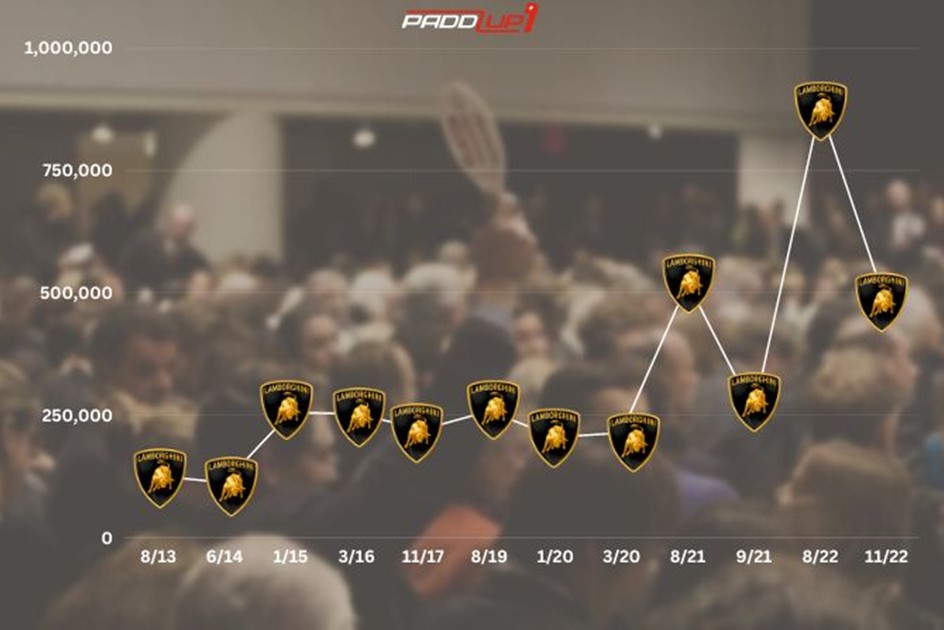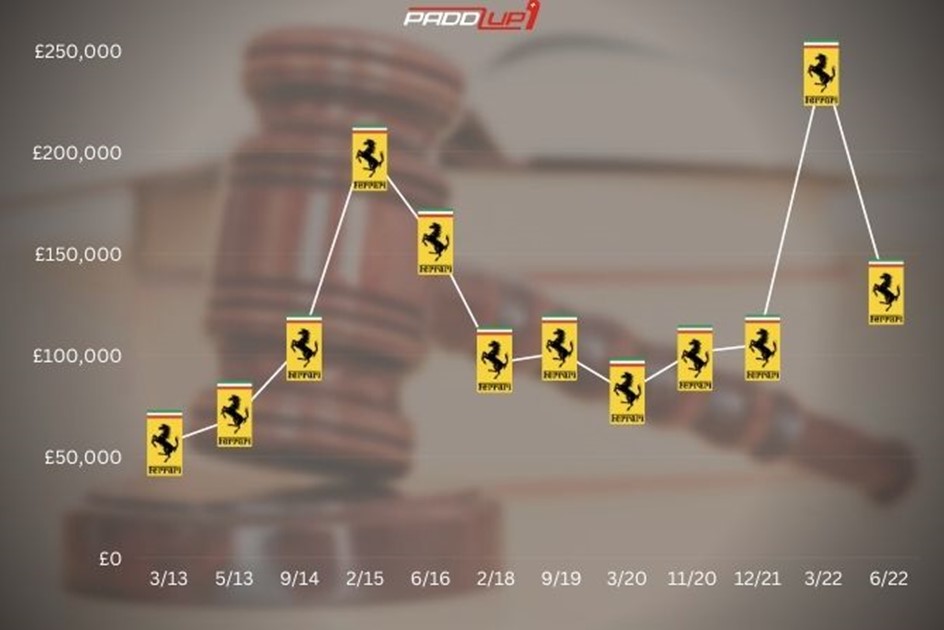Investment head-to-head: Lamborghini Countach LP500 S vs Ferrari Testarossa
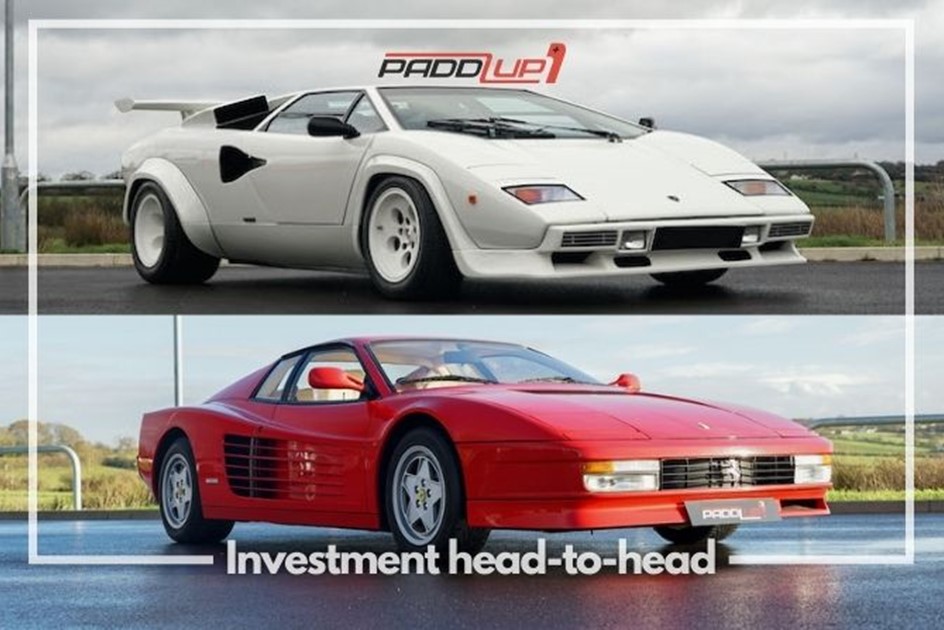
The ultimate poster car duo. But are you team prancing horse or team raging bull? Growing up as a car-obsessed youth of the eighties, it was likely that you, or someone you knew, had blutac’d a striking image of a supercar onto the bedroom wall.
Likely too, that it was either a white Lamborghini Countach or a red Ferrari Testarossa that was purchased from the local Athena flip-through poster rack. These were the iconic eighties ‘big hair and shoulder pads’ supercars and with the passing of time, both have become synonymous with the word ‘supercar’ with their wedge-shaped silhouettes, wide-hips and vented intakes.
Those car-loving kids are now old enough and, some, affluent enough to be able to buy and experience the real thing. If you fall into that category then investing in one of these automotive icons may prove to be a wise move. Not only would you be able to experience everything a classic supercar has to offer from an experience perspective, but the owner also reaps the remunerative rewards of an appreciating automotive asset.
Poster wars
A big old wedge
If any individual is to be accredited with the modern supercar aesthetic, it would have to be Marcello Gandini and the dramatic styling of the Lamborghini Countach. While it wasn’t the first design to suggest Lamborghini’s future was angular rather than curvaceous, Gandini working for Bertone, penned an irrefutably distinctive form that inspired countless generations of supercar design.
The very first Countach prototype was displayed at the 1971 Geneva Motor Show and was dubbed the LP500, LP or Longitudinale Posteriore, denoted its orientation and rear-mid engine positioning and 500 for the intended 5.0-litre V12. Two years later, another prototype was displayed at the very same motor show, this time fitted with a 3.9-litre. After high levels of interest at the show, the first production cars broke cover in 1974, with a revised moniker of the LP400.
That very first Countach earned itself the nickname nickname ‘Periscopio’, owing to its unusual periscope-style rear-view mirror. The rear window was all but redundant so the rear-view assembly looked up and backwards through a channel in the roof.
The 400 S followed in 1978 with revised exterior features such as an optional rear wing, the now-iconic appendage owes its success to Walter Wolf Racing owner Walter Wolf’s custom Countach and despite a hefty 10mph top speed deficit with the wing attached, most customers opted for the ‘style over substance’ approach.
1982’s 500S introduced a significantly larger 4.8-litre engine and an updated interior. The bodywork, however, was unaltered. Three years later, the engine was given four valves per cylinder and bored to 5.2 litres, resulting in a new title – the LP5000 Quattrovalvole. The LP5000 S is widely considered to be the model that epitomises the eighties poster car and can command the collector’s nostalgia premium for those passionate car kids turned investors.
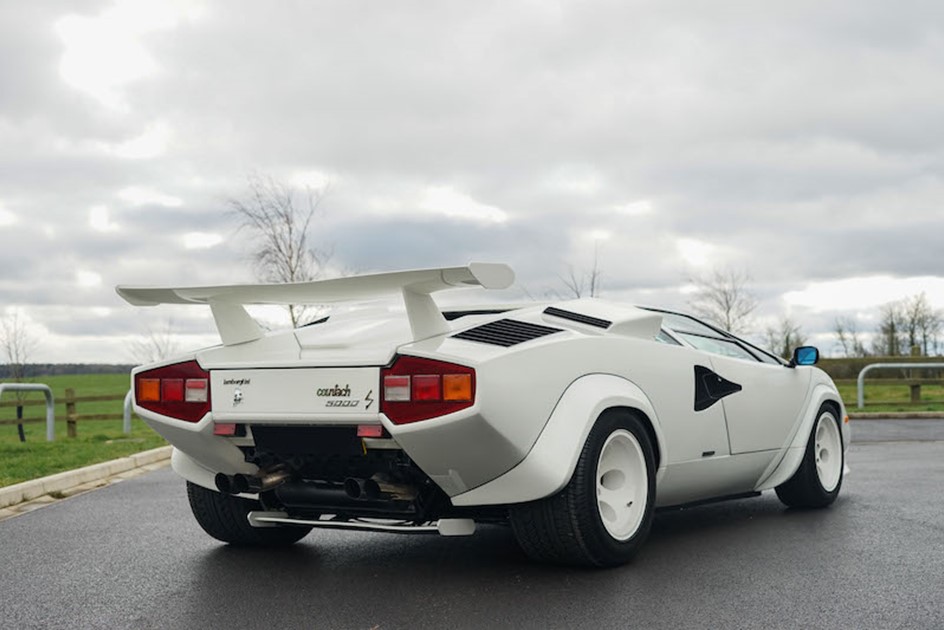
James Crockett to Jordan Belfort
Although the Ferrari Testarossa’s approach was more conservative than the Countach’s, it was still far from conventional. The Testarossa became an instant hit when it was revealed at the 1984 Paris Motor Show.
The blend of its now-signature side-mounted radiator accommodating 'cheese grater' strakes, retro-feel pop-up headlights and flat-12 390bhp engine ensure this supercar is a true icon of the era. Penned by Pininfarina, the layout of the Testarossa was under the direction of Leonardo Fiorvanti, who understood racing car design and the associated aerodynamic performance benefits of moving the radiators to the rear-mid position. As a result, it boasts what are arguably some of the most recognisable and memorable automotive features of the decade.
When introduced for the 1985 model year, the Testarossa had magnesium single bolt ‘monodado’ wheels and a singlehigh-mountedd side view mirror on the driver's side giving rise to the unofficial ‘monospecchio’ title.
At the Geneva Motor Show in March 1986, Ferrari unveiled an updated variant with twin mirrors fitted at the base of each A-pillar and, in June 1988 the single-nut wheels were replaced by a new five-bolt design. These were manufactured by both OZ and Speedline and led to a slightly wider track, both front and rear. The Testarossa is said by many to be the sweeter of the two to drive, with light and delicate controls in contrast to the ferociously visceral Countach.
Although the Countach is better known for its memorable scene in The Wolf of Wall Street, the Testarossa also boasted screen time in the 2013 Martin Scorsese film. Of course, the Testarossa is more commonly associated with the crucial role it played in Miami Vice while an unforgettable variant of the Countach is featured in The Cannonball Run.
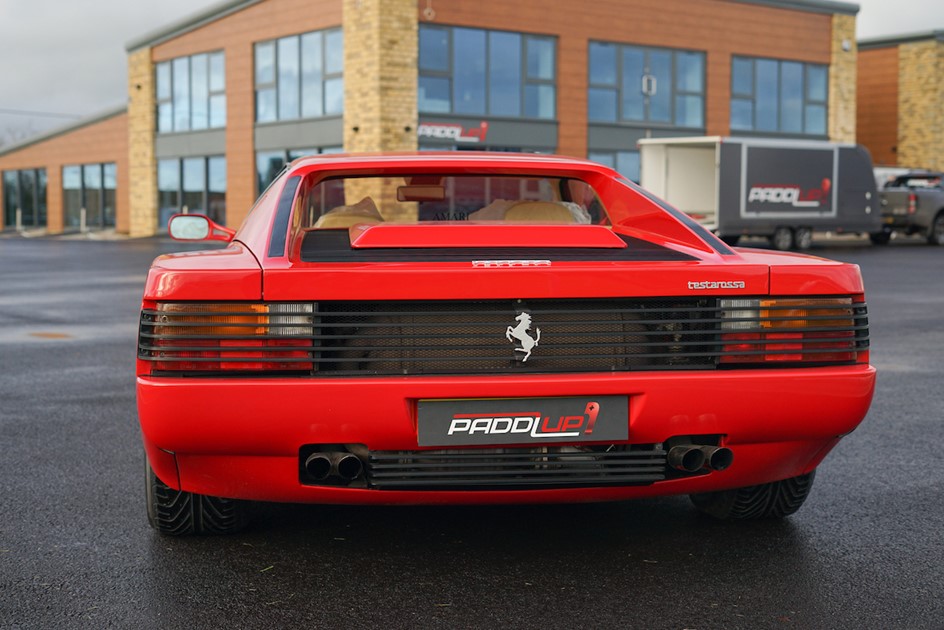
Performance
The figures for the original Countach are considerably closer to that of the Testarossa but for the purposes of this comparison, we are looking at the LP5000 S. In some ways, it's a very fair comparison; both models were made in 1985 so had the same technology at their disposal. On the flip side, by that point, the Countach had a whopping 14 years of development under its belt handing a significant advantage to the Lamborghini.
In terms of kerb weight, the Testarossa is slightly heavier with 1630 kg to the Countach’s 1490 kg. As far as power output is concerned, that one also goes the way of the Countach which boasts 449bhp, 64 more than the Testarossa’s 385.
Now down to the important stuff. The 0-62mph time of the Countach bests that of the Testarossa by a second, the former reaching the threshold in 4.8 seconds and the latter in 5.8. Top speed is a much more closely contested affair with the Testarossa stretching its legs all the way to 180mph, it is still bested by the Countach however, which reaches 185mph. A clean sweep for the LP5000 S on the stats front.
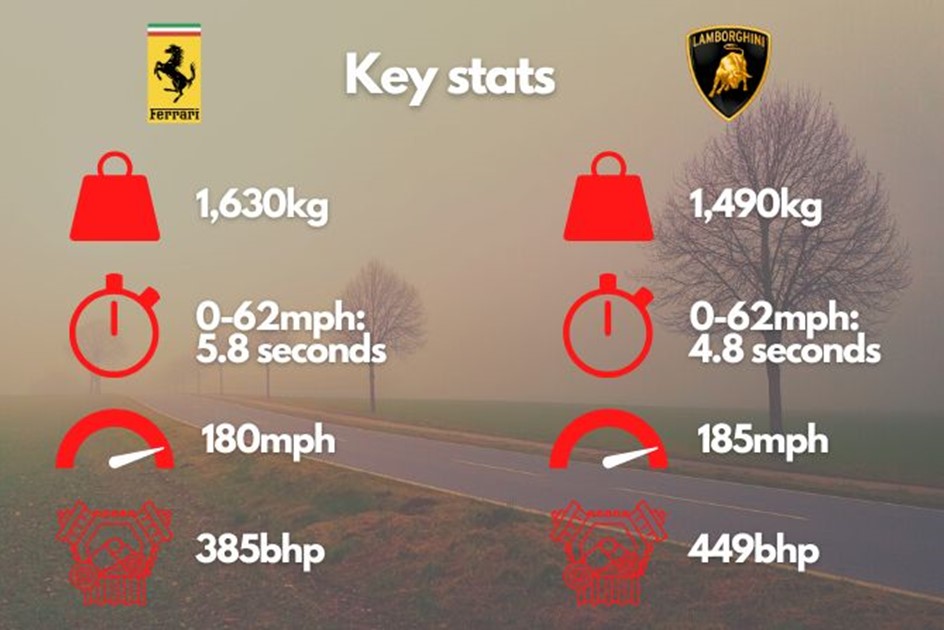
Is nostalgia what it used to be?
RRPs
Prices when new differ slightly between these two models. Again, this is undoubtedly a result of the extended development period of the Countach by the time the Testarossa was introduced. A later iteration of the Ferrari – the 512 TR – saw a sticker price which surpassed that of the LP5000S in another eight years' time. At the time of release though, the RRP of the standard Testarossa sat at £62,665 while the Quattrovalvole was around the £70,000 mark.
What does that mean for the current market?
In the early to mid-2010s, LP5000 S examples were barely scraping through to the six-figure mark but over the course of the past eight or so years, sales have been on the rise. By early 2015, one such model achieved a quarter of a million at auction for the first time. In the mid to late-2010s, Quattrovalvole values transitioned to a state of inertia for a number of years; after that £250k car in 2015, the needle barely moved and even underwent a slight dip at the beginning of the Covid-19 pandemic.
The 2020s has been a much more lucrative decade for ‘the wedge’ so far with one example reaching a hammer price of over half a million pounds – £598,404 to be precise – for the first time in August 2021. Since then, one £257,000 example has been the only blemish on an exponentially increasing dataset with two further sales above £500,000 and one particularly pristine car breaching the $1million mark at £881,000. In reality, the average for sales in the past year or so has been around the £400-450k figure.
In contrast, the Testarossa’s auction data is not only more abundant but also occupies a more modest price range. Its relative availability to buyers thanks to its more plentiful production numbers (7,177 to the LP5000 QV’s 610) is the biggest contributing factor to lesser values. That being said, the Testarossa has still performed well over the last decade or so, just at a lower price point than the Countach.
Few Testarossa broke the £100,000 barrier in the early 2010s. It wasn’t until midway through the decade that a £100k sale of the model became a regular occurrence. The average has remained constant ever since (apart from a dip pre-Covid as we’ve seen with many others), hovering around the six-figure mark but there has seen a surge towards mid-£100k and above from 2022 and into ‘23. During that same timeframe, peak sales have also risen considerably and are now knocking on the door of £300k.
ROI
We’ve condensed the auction data down for both cars, showing the average over the long term, seasoned with a few headline values to highlight what returns are actually achievable given the right circumstances. Of course, there are other factors at play such as mileage and condition, and a more extensive data set can be found on Glenmarch to give a fuller view of overall trends. To show realistic ROIs for both cars, we’ve run the numbers on peak values in the mid-2010s and peak values at present.
The Testarossa represents an attractive investment proposition by anyone’s standards. A value of £103,600 in September 2014 and one at £241,843 (the highest sale price to date) yielded an ROI of 133.4 per cent. Even the lowest price points from £57,120 to £101,250 produce a 77.2 per cent return so still nothing to sniff at.
By comparison, the Countach’s peak value of £256,633 in January of 2015 compared to the modern-day high point of £878,326 equates to a 242.2 per cent increase – one of the highest ROI we’ve seen in the Investment head-to-head series, second only to the Ferrari F40. Similarly to the Testarossa, even returns in the low end of the spectrum would raise the eyebrows of most non-automotive investors; £113,500 in June of 2014 to £257,600 in September of 2021 still results in a 126.9 per cent increase.
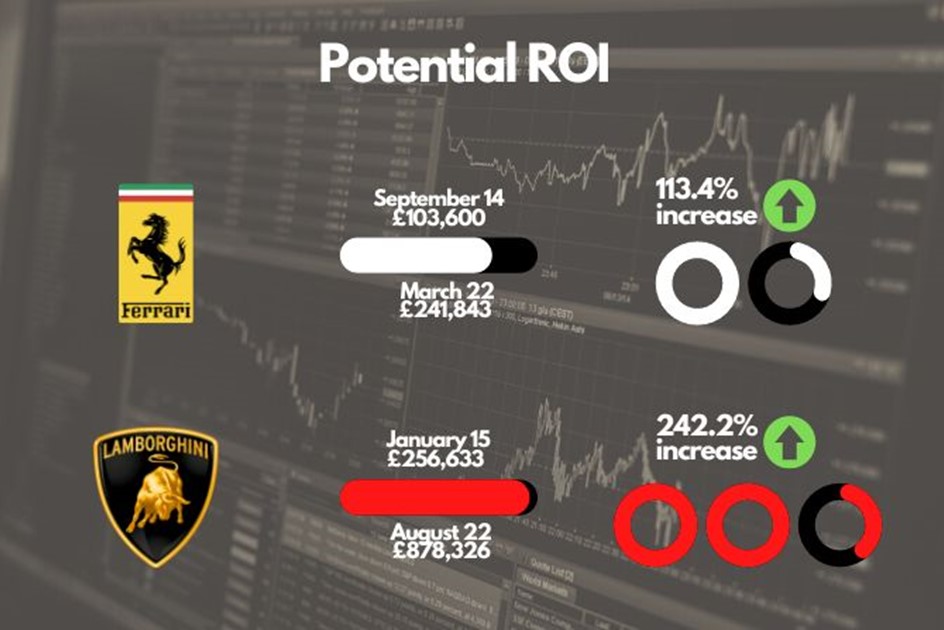
Conclusion
With all of the usual variables taken into account, neither car is one to overlook when it comes to potential returns. It seems the Countach will perform better at either end of the scale. Still, the Testarossa holds its own in a battle of remuneration and is much more accessible, possibly for those looking to make a first step into the world of supercar investing. Ultimately, it comes down to one simple question: are you team prancing horse or team raging bull?


